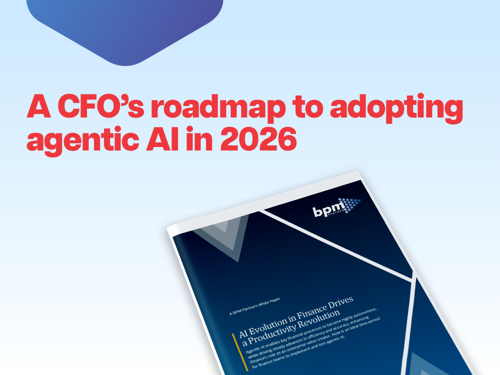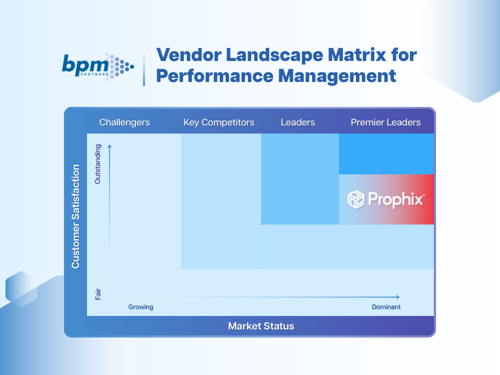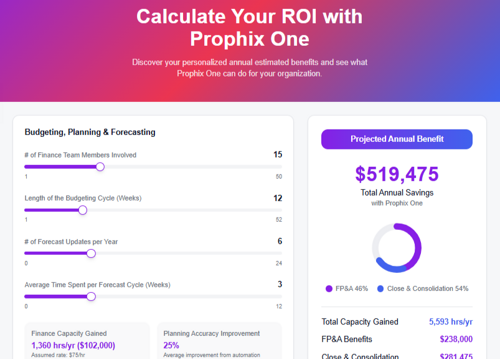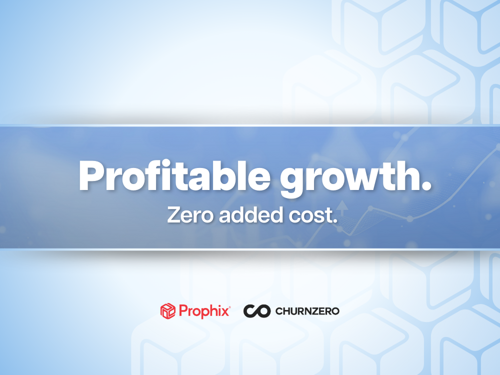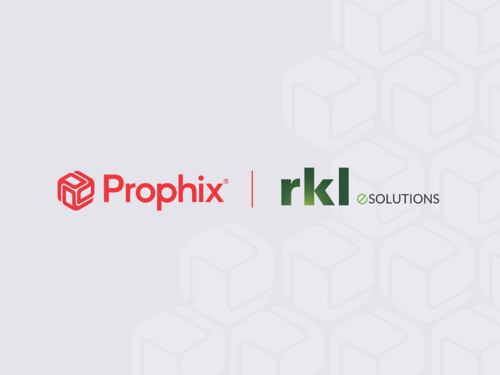Download the BPM Partners Whitepaper
Faster cost planning with Prophix One FP&A Plus
Cost planning is a critical process for finance. FP&A Plus makes it faster, dynamic, and more strategic.
April 25, 2025Cost planning is the process of forecasting, allocating, and managing the expenses required to run a business efficiently and profitably. Cost planning involves analyzing historical data, projecting future costs, and aligning those projections with strategic goals and operational realities.
For finance leaders, effective cost planning is foundational to budgeting, performance management, and decision-making. Yet for many organizations, the process is still hard due to manual spreadsheets, siloed data, and limited visibility. This slows down cycle times and increases the risk of error. In today’s fast-paced business environment, finance teams need tools that make cost planning not only more accurate, but significantly faster.
How does FP&A Plus support cost planning for finance teams?
For many finance teams, cost planning today is an uphill battle. The process often relies on a patchwork of spreadsheets, outdated legacy systems, and disconnected data sources. Trying to consolidate inputs across departments, run calculations, and produce timely insights is not only slow, it’s error-prone and reactive. When market conditions shift or executives ask, “what if,” finance is left scrambling to pull data, rebuild models, and rework assumptions, often delaying decisions or, worse, making them based on stale information.
Enter FP&A Plus: built for how finance teams work today and where they’re headed tomorrow.
With FP&A Plus, cost planning becomes faster, more dynamic, and far more strategic. FP&A Plus is designed to process massive volumes of data with speed and accuracy. Finance teams can break down costs across departments, projects, products, and more—all in one unified model. Thanks to its high-performance computing engine, even complex cost allocation models and multi-scenario forecasts are executed in seconds, not hours.
Cost planning before FP&A Plus
- Budget cycle lag: Teams spend weeks manually collecting and reconciling spreadsheets.
- Limited visibility: Cost drivers are siloed, preventing true insight into spending trends.
- Rigid models: Any changes in assumptions require time-consuming rebuilds.
- Reactive planning: By the time analysis is complete, the opportunity to act has passed.
Cost planning with FP&A Plus
- Speed and scale: Run large-scale cost models with thousands of data points in real time.
- Dynamic planning: Instantly update models to reflect changes in inputs—such as tariff uncertainties, vendor pricing or headcount—and see the downstream impact.
- Granular insights: Drill down into costs by function, region, or product to identify inefficiencies and uncover savings opportunities.
- Confidence and agility: Respond faster to market changes, executive questions, and planning cycles with accurate, up-to-date data at your fingertips.
Cost planning examples in FP&A Plus
Detailed cost driver analysis
The challenge: In many organizations, costs roll up into broad categories like COGS or Operations, leaving finance teams blind to what’s really driving those expenses. Without granular data, it’s nearly impossible to identify which product, service line, or vendor relationship is eroding margins.
How FP&A Plus helps: Imagine a manufacturing company producing hundreds of SKUs across several plants. With FP&A Plus, they can link detailed operational data—like material usage, supplier rates, and machine run-times—directly to cost plans. When raw material prices fluctuate, the finance team doesn’t just see the total impact on COGS. They can pinpoint which products are driving the increase, which regions are most affected, and whether changes in supplier contracts or production scheduling could reduce costs.
Outcome: Finance can shift from analyzing costs after the fact to actively optimizing them, enabling smarter sourcing, pricing, and production decisions.
Scenario modeling and forecasting
The challenge: Scenario planning is often limited to a few “big levers” (like headcount or revenue) because traditional tools can’t handle more complex, multi-variable models. Building multiple versions of a plan is slow, manual, and disconnected, so finance teams avoid it unless necessary.
How FP&A Plus helps: Take a healthcare system anticipating rising wage pressures and supply chain instability. With FP&A Plus, the team can create multiple layered scenarios:
- 5% increase in hourly rates for nursing staff.
- 10% delay in delivery of critical medical supplies.
- Projected 3% decline in elective procedures.
These variables are tied directly into labor models, department budgets, and margin forecasts. Instead of rebuilding the model from scratch each time, FP&A Plus handles the complexity on the backend—allowing real-time scenario comparisons with full transparency into downstream impacts.
Outcome: Finance gains agility. They can proactively guide leadership through “what-if” conversations and help make faster, data-backed decisions in uncertain environments.
Real-time variance analysis
The challenge: Most finance teams only spot cost variances during monthly or quarterly closes. By then, it’s too late to act. Root causes are hard to trace, and teams end up explaining overspending after it’s already impacted the bottom line.
How FP&A Plus helps: Consider a regional construction company managing dozens of job sites simultaneously. With FP&A Plus, actuals are integrated daily, pulled from their ERP and operational systems, into a centralized cost model. As soon as spending begins to drift from the plan (e.g., equipment rentals, labor hours, fuel usage), alerts flag the issue, and managers can drill down to the specific job, line item, or vendor in question.
Because the system is built to handle high data volumes and complex cost structures, this analysis isn’t limited to top-level variances. FP&A Plus can expose hidden trends, like consistently higher fuel costs in a certain region, helping teams take corrective action faster.
Outcome: Finance and operations can address issues in-flight, not after the fact, minimizing budget overruns and improving overall project profitability.
Start cost planning with FP&A Plus today
Rising costs, shifting market dynamics, and external pressures, like the growing uncertainty around tariffs, add layers of complexity that traditional planning methods simply can't handle. Whether it’s modeling the impact of new import duties or adjusting for vendor price increases, businesses need the ability to adapt quickly and accurately.
FP&A Plus rises to meet that challenge. With its fully cloud-native architecture, lightning-fast processing, and ability to scale with your business, FP&A Plus transforms cost planning from a slow, reactive task into a proactive, strategic advantage. Finance teams gain the power to drill deeper into cost drivers, run dynamic scenarios on the fly, and monitor performance in real time, unlocking new levels of agility, precision, and confidence.
By choosing FP&A Plus, finance leaders aren’t just planning costs, they’re controlling them. And in a world where every dollar counts, that’s a competitive edge no organization can afford to miss.
Learn more about cost planning with Prophix
